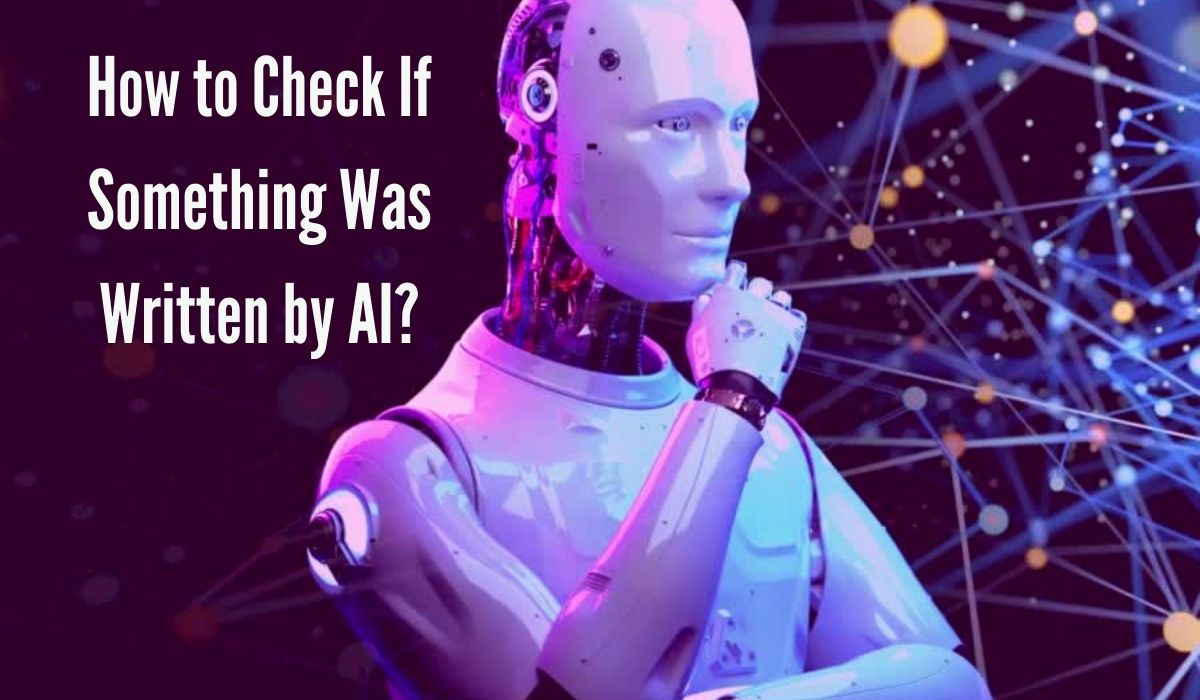With the rise of artificial intelligence and its increasing ability to generate human-like text, it has become essential to distinguish between content created by humans and that generated by AI.
Whether you’re a content creator, researcher, or curious individual, knowing how to identify AI-generated content can be valuable.
In this article, we’ll explore various methods and techniques to help you determine if something was written by AI.
What is AI-Generated Content?
AI-driven text generation models, such as OpenAI’s GPT-3, Google Bard, have reached a level where their outputs closely resemble human-written text. This advancement has raised concerns about the authenticity and credibility of written content. While AI-generated content can be impressive, there are telltale signs that can help you identify it.
- Analyzing Language Patterns: AI-generated content might exhibit language patterns that are slightly unnatural or overly sophisticated. AI models often excel in replicating formal language but might struggle with capturing colloquialisms, regional expressions, or idiomatic phrases.
- Consistency and Coherence: AI-generated text can sometimes lack consistency and coherence. Watch out for sudden shifts in tone, style, or topic that seem abrupt or disjointed, as these could be indicative of AI-generated content.
- Contextual Awareness: AI models may struggle with maintaining context over longer passages of text. If you notice that the content appears to lose track of the subject or doesn’t follow a logical flow, it could be a sign of AI involvement.
- Uncommon References: AI models are often trained on vast datasets, which means they might reference obscure or outdated information that a human writer might not use. If you encounter references that seem out of place or overly technical without proper context, it might be AI-generated.
Methods to Check for AI-Generated Content
While no method can provide a definitive answer, combining multiple approaches can increase the likelihood of identifying AI-generated content accurately.
1. Use AI Detection Tools
Several online tools have emerged to help users detect AI-generated content. These tools analyze the text and provide a likelihood score of it being written by an AI model. However, these tools might not be foolproof and should be used in conjunction with other methods.
2. Evaluate the Source
Consider the source of the content. Reputable platforms often disclose if content has been generated by AI. If you’re unsure, researching the source can give you insights into their content creation practices. You could also use fact checker AI tools to verify claims or references made in the content. These tools can help cross-reference information with credible databases to assess its reliability.
3. Search for Duplication
Copy a segment of the text and perform a web search. If you find identical or very similar passages in multiple places, it could indicate that the content was generated by an AI model and widely distributed.
4. Assess Metadata
Check metadata associated with the content, if available. If the author is listed as an AI model or a specific AI-powered platform, it’s likely that the content is generated by AI.
5. Test for Creativity
Ask the content to generate something creative, unique, or imaginative. AI models often struggle with true creativity and might recycle existing phrases or concepts.
Conclusion
As AI-generated content becomes more prevalent, the ability to discern between human and AI writing is crucial.
By analyzing language patterns, coherence, context, and using various detection methods, you can increase your chances of accurately identifying AI-generated content.
While no method is foolproof, a combination of approaches can help you make informed judgments about the authenticity of written material.
